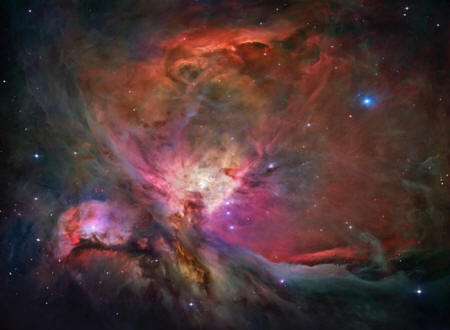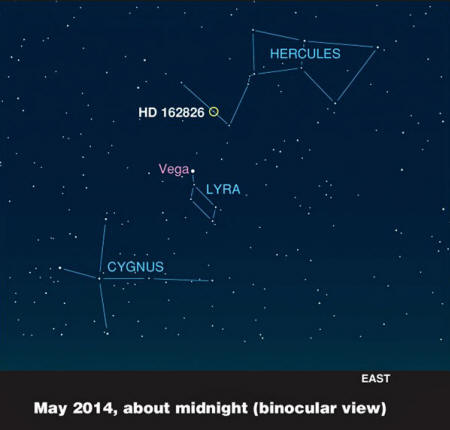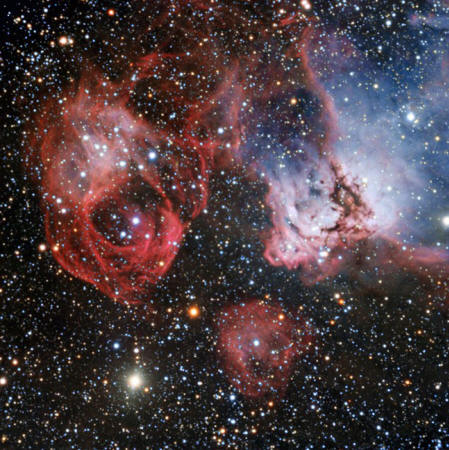|
by Sebastian Anthony
from
ExtremeTech Website
If that wasn't cool enough, the lead
author also says that - because the Sun and this sibling star were
once relatively close and may have bumped uglies - there is a
"small, but not zero" chance that planets orbiting this star could
host extraterrestrial life.
It's about 15% larger than our Sun, but
even so you'll need some binoculars or a simple telescope to see it.
110 light years, in interstellar terms, is very close; the galactic
center of the Milky Way, by comparison, is around 25,000 light years
distant; Sirius, the brightest star in the night sky is around 9
light years away.
HD 162826′s location in the northern night sky,
in the constellation
Hercules
When they found a star that matched our
Sun's chemical makeup, they then looked at its orbit, to see where
the star had been, and where they're currently heading. By combining
both of these calculations, the astronomers ended up with just one
star: HD 162826.
To find out more, we'd need to take a look at the star with a proper planet-spotting telescope, such as Kepler, or its successor the Transiting Exoplanet Survey Satellite (read By 2020, we'll finally have the ability to locate life-harboring, alien planets.)
Our Sun and its new-found sibling would've been birthed
in a similar nebula
4.5 billion years ago.
As far as we can tell, both stars were probably born around the same time - 4.5 billion years ago - in the same birth cluster (nebula). We're not entirely sure which nebula we were born in, or if that nebula still exists - we may have drifted out of the nebula, or the nebula may have dissipated, we just don't know.
In any case, Ramirez speculates that, back when the Sun, HD 162826, and all of its fellow siblings were close together, it was probably quite common for asteroids to knock a chunk off a planet, which then traveled to a nearby planet.
If one of those planets harbored life, it's 'possible' that life could've been seeded on other planets in other solar systems.
Moving forward, the plan is to identify more of the Sun's siblings. There could've been thousands or millions of stars in our Sun's birth cluster, and they're probably all over the Milky Way by now.
If we can locate enough sister stars, we should be able to backtrack their orbits to find out where they once all coexisted:
|



